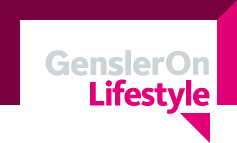Who Defines Your Brand, Anyway?
 Kyle Stuart
Kyle Stuart Airbnb headquarters. Image © Gensler.
How do you define a brand’s value? And who, ultimately, defines it? Despite common belief, a brand's value is not determined by how well its assets are engineered in a design studio or marketing department. In fact, overtly contrived marketing or branding strategies are unlikely to survive in any of today's increasingly competitive marketplaces. Instead, they require real world influence and application. The assets must be felt, either physically or emotionally, for its audience to assign the brand value and determine its worth. To quote the legendary Walter Landor, a pioneer in the world of branding: “Products are made in the factory, but brands are created in the mind.” Essentially, consumers define brands, not the other way around.
For any type of brand manager, this insight may sound frightening. But not all hope is lost. Organizations can actually build their brand to achieve more impact if they leverage the fact that consumers ultimately define their value. To do this, a brand's assets must be designed to allow ample opportunity for audiences to contribute to its expression. The organization’s primary role in this regard should be providing platforms and tools that encourage engagement. When the public provides input, the organization can focus its efforts on guiding that input in ways that are advantageous for framing its perception.
How can organizations meaningfully engage with customers, and collectively frame the conversation about their brand? Here are a few suggestions:
Invite consumers to contribute to the conversationWith today’s increasing accessibility to technological resources, we’re seeing a shift in how consumers feel about participating in the dialogue for which both they and organizations advocate. The shift can be examined more clearly by taking a look at the trends in recent years related to paid media, owned media and earned media. Earned media, which is the center of this topic, is essentially media activity that is not directly generated by the organization, but external audiences instead. Huge, a prominent marketing agency, conducted extensive research on how marketing spend is shifting to align with current trends. Part of their research highlighted Unilever, which has shifted 25 percent of its budget since 2000 to invest more in strategies that promote earned media. This indicates that consumers are now more than willing to contribute to the conversation if provided the opportunity.
Tap into your brand’s audience and shared affinitiesFor another example, consider how Airbnb used this approach to better align the public's perception with their vision. Undergoing a brand refresh in recent years, the organization was determined to rework their identity so that the consumer would be placed at the center of their brand's expression. After lengthy research, Airbnb discovered their audience generally carried a strong, emotional sense of purpose and affection for the community in which they live. Tapping into this insight, they developed their new proposition by creating the slogan, "Belong Anywhere," which allowed them to create a range of initiatives designed to capture stories from the user's point of view. Their website provides a great snapshot of these efforts.
Airbnb headquarters. Image © Gensler.
At the center is the core piece of their brand's assets: the new logo. Designed simply enough so that anyone could draw and contribute to its expression, the logo is designed to transcend language barriers and be expressed in varying capacities by different types of community members. This shift generated considerable buzz and discussion. On July 16, 2014, Airbnb trended on Twitter for eight hours, a significant feat by social media standards. The brand refresh ignited a global conversation creating a staggering amount of awareness and signaled a notable pivot for the value of the company's brand.
A set of brand assets can certainly entice consumers to be part of the conversation, but it's not the conversation itself. The conversation is generated by consumers, which lends itself to building a brand. The key to managing the brand successfully is developing a set of assets that invite and properly facilitate conversation. As marketers, we must get accustomed to understanding that brands are only as good as they’re perceived in consumers’ minds. We’re seeing how brands don't define consumers, but rather, consumers define them. An organization can’t manufacture how its audience should feel, though it can bring those feelings together to represent a collective purpose. Organizations would be wise to invite their audiences to take an active role in building something meaningful.
 |
Kyle Stuart is marketing communications designer in Gensler's Los Angeles office. He is passionate about helping organizations communicate their unique qualities through the use of innovative marketing practices and authentic brand development. He works with architects, designers, analysts and planners to craft compelling stories in ways that contribute to winning meaningful work. Contact him at Kyle_Stuart@Gensler.com. |



